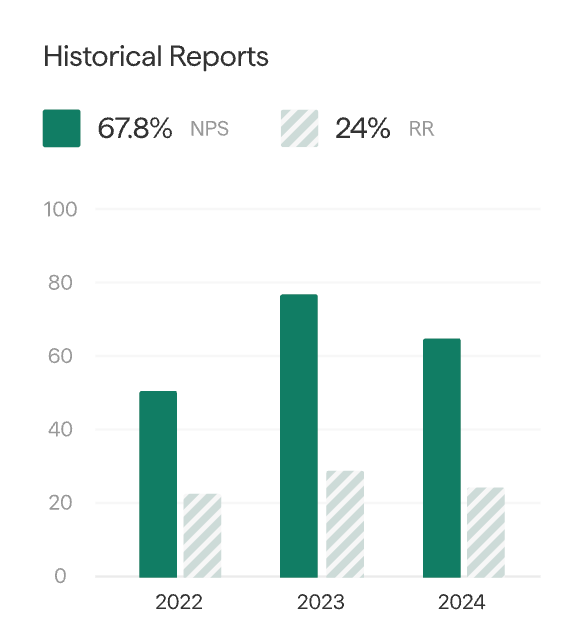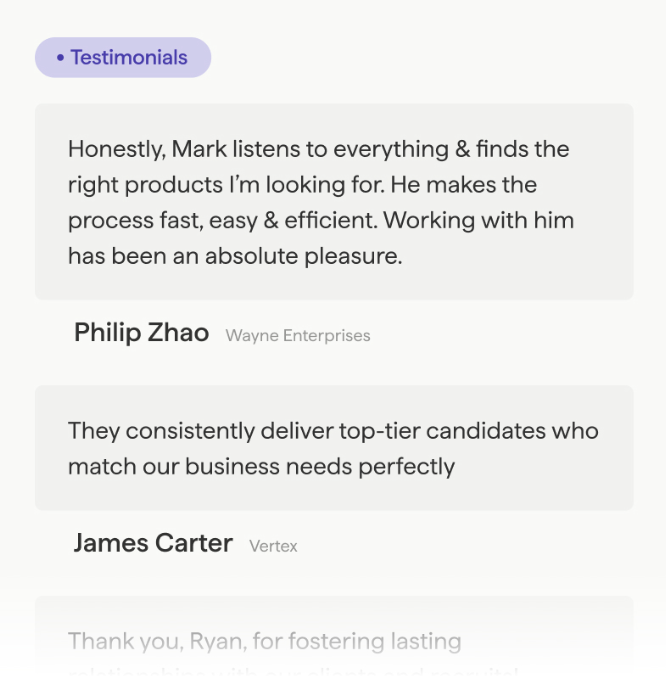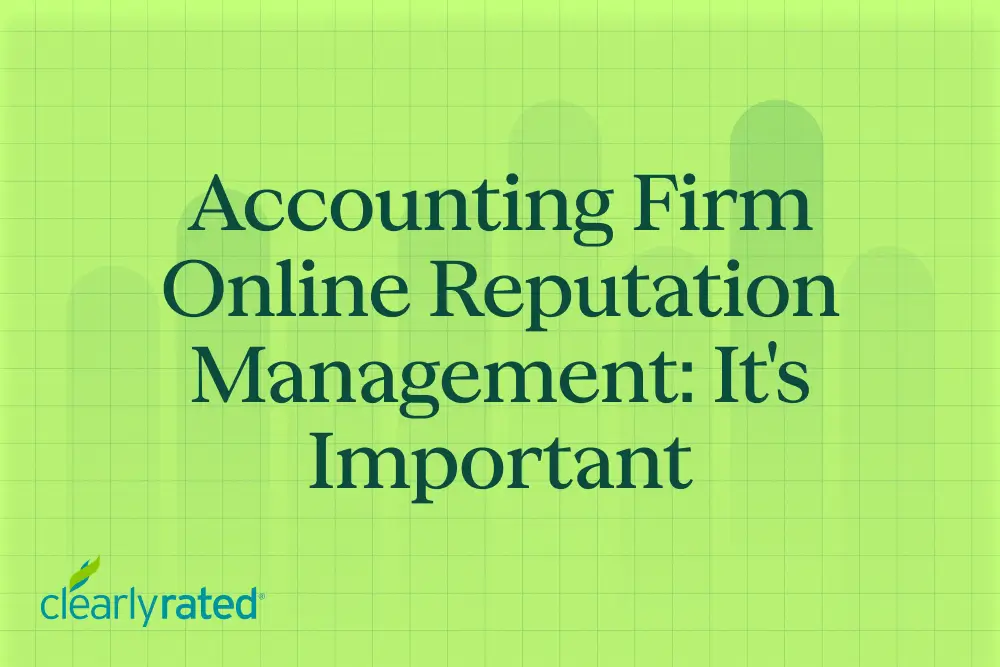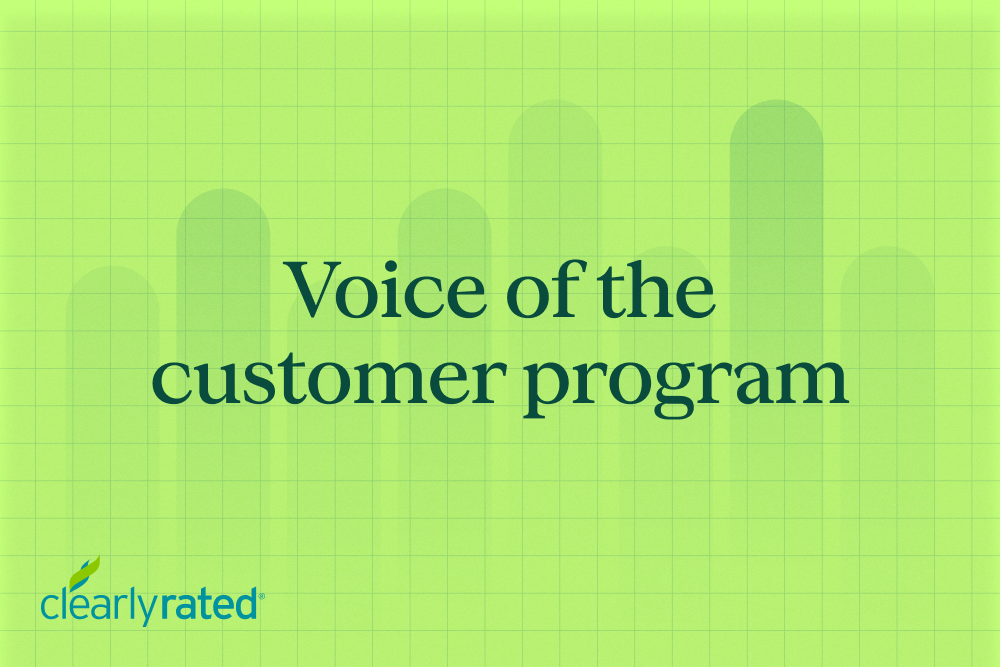11 Reasons Why Customer Experience (CX) Programs are Doomed to Fail in Professional Services

- Many CX programs fail due to weak leadership, fragmented systems, and poor culture, which prevent real progress.
- When CX is not tied to revenue or retention, it gets sidelined as budgets and priorities shift.
- Firms that check in with employees daily see an NPS of 66, far above the 36 industry benchmark, proving consistent engagement drives loyalty.
- ClearlyRated helps professional services overcome these gaps with real-time feedback, benchmarking, and tools that connect CX directly to growth.
Most customer experience (CX) programs are usually launched with serious intent, positioned as strategic initiatives meant to strengthen relationships and deliver consistent value across projects. Over time, however, many fail due to common issues, including weak leadership support, fragmented technology systems, and metrics that cannot drive meaningful business outcomes.
In this article, we will break down the most common reasons customer experience programs fail and explain why many firms never see the progress they expect. You will also see how client experience platforms like ClearlyRated can help professional services close these gaps, build real accountability, and keep their programs tied to measurable business value.
Top 11 Key Reasons Why CX Programs Fail
Having delivered many customer experience projects in professional services, we identified 11 reasons why a CX program would fail.
1. Lack of leadership buy-in for customer experience
When leadership does not give CX programs visible support, the programs lose the resources, attention, and energy they need to succeed. The most successful firms make customer experience part of their identity and strategy (not an optional initiative). When leaders clearly signal that CX is a priority, employees align their efforts.
Without that commitment, programs rarely survive the first wave of challenges. Teams may start enthusiastically, but the lack of support eventually makes progress slow and disconnected from real business outcomes.
2. CX that doesn’t connect to business goals
If leaders and teams can’t see how CX drives revenue, growth, or client retention, they’ll dismiss it as a side task rather than a vital business function. Too many firms set up programs without knowing why they’re doing it, only that they “should.”
That lack of purpose kills momentum and makes it easy for CX to get ignored when budgets shrink or priorities shift. The strongest programs prove their value by showing how client insights connect directly to business success.
3. Inadequate employee training and engagement
According to data from our 2025 Staffing Buyers Insights Report, more than one in 10 candidates refuse to even consider working with a staffing firm. Of those who do, one in four walks away after a poor employee experience.
Many candidates turn first to job boards, direct applications, or personal networks, ranking staffing firms far lower in preference. This happens because too many employees are undertrained in customer interaction or disengaged from their role.
When staff cannot explain the value of the firm, handle concerns, or deliver consistent service, customers quickly move on, proving that engagement inside the firm drives loyalty outside it.
4. Lack of a (truly) customer-centric culture
A program on paper means little if employees see it as a checklist rather than a mindset. Ask yourself if your firm gathers feedback at scale, and more importantly, if you act on it. If the answer is no, then you do not have a customer-centric culture, but a survey machine.
Customers notice when their input has no effect, and they stop providing it. A culture that prizes customer needs at every level turns feedback into real action, while a culture that ignores it turns CX into empty talk.
5. Failure to act on feedback
Both customers and employees today expect faster responses, personalized insights, and visible changes, especially as AI sets new benchmarks. In fact, 55% of them believe AI will replace much of the work professional firms do, and they expect improvements in communication, job matching, and career guidance.
If a firm keeps gathering feedback without turning it into visible action, it creates frustration instead of trust. Acting on client and candidate feedback is no longer optional; it is the only way to keep a CX program from failing.
6. Insufficient data and analytics
Without visibility into customer preferences and pain points, you cannot design services that meet expectations or build loyalty. The right professional services insights provide a roadmap for pursuing growth in new verticals, identifying the markets worth entering, and pricing services in ways that reflect actual client demand.
Professional firms that track the right metrics can connect feedback to business outcomes, while those that do not remain stuck guessing. A CX program that fails to use data effectively will always trail behind one that builds a client experience strategy on clear customer insights.
7. Complexity of service offerings
Clients do not want to spend mental energy figuring out what you offer or how you do it. A recent study shows that 86% of consumers expect seamless experiences across multiple channels, and confusion only pushes them toward competitors.
Making professional services easy to understand and access strengthens clarity and trust. CX practices that untangle complex services create happier clients, reduce friction, and make every touchpoint feel purposeful rather than puzzling.
8. Lack of innovation and adaptation
One of the most common CX failures comes from firms that refuse to adapt as client expectations change. Technology, shifting industries, and competitive pressures continuously reshape what clients want.
If you stand still, you fall behind, and subpar experiences quickly replace meaningful ones. To uncover CX failure reasons, you need to ask tough questions and answer them honestly:
- How did your customers’ expectations shift when COVID disrupted the professional services market overnight?
- How long did it take your firm to adapt its CX programs to meet those new demands?
- Did your leadership focus inward on protecting operations, or outward on supporting and reassuring clients?
Failing to ask and act on these questions leads directly to CX program failure statistics that no firm wants to own.
9. Ineffective communication
CX programs crumble when communication with clients or placed talent is inconsistent or reactive. In fact, professional services firms that check in with employees every single day earn an average NPS of 66, according to our 2025 Staffing Buyers Insights Report. Compare that to the industry benchmark of 36, and the gap is massive.
The more frequently people hear from their firm, the happier and more loyal they are. Yet too many firms communicate ineffectively or only when problems surface, leaving clients feeling overlooked. Daily, proactive touchpoints show customers that they matter and that their feedback is valued, which transforms CX from a vague concept into a measurable advantage.
10. Overemphasis on metrics
Many CX programs fail because they collect data that feels safe but does not drive change. Tracking Net Promoter Scores (NPS) or satisfaction scores alone can create the illusion of progress while avoiding harder measures like client retention, referral rates, and revenue impact. If your program cannot tie data to business results, leaders will quickly question its value.
Successful firms use metrics that reflect real outcomes and link directly to growth. They measure not only how clients feel today but also whether those clients will return, expand their work, or recommend the firm.
Remember, soft metrics without complex business ties make CX a report, not a strategy.
11. Check-the-box mentality
One of the biggest customer experience pitfalls comes from treating CX programs as items on a to-do list. Too many firms say they invest in CX because they:
- Appoint a CXO but never give them real authority or budget
- Send out surveys but never act on the feedback
- Announce being “CX-led” without changing client-facing practices
Compliance replaces commitment when feedback is collected without meaningful action or when initiatives appear more as formalities than as a strategic approach. Superficial efforts can feel worse than no effort because clients see the gap between words and actions. CX programs fail when they look performative instead of purposeful, which is why this mentality is so destructive across professional services.
Turning CX Challenges into Wins with ClearlyRated
Many reasons customer experience programs fail come down to old methods, incomplete data, and disconnected teams. We offer staffing and professional services firms a dedicated CX feedback and benchmarking tool designed to change that pattern. It tracks client satisfaction, loyalty, and benchmarks performance against industry peers, giving you a clear view of where you stand and where you need to improve.
As KatieRose D., Brand Manager, shares on G2:

Instead of outdated survey methods that deliver slow results, we provide real-time, flexible feedback. This allows firms to identify risks before clients or talent leave, not after revenue takes a hit. Integrated metrics tie survey results directly to performance benchmarks, making it much more attainable to improve CX program success.
To make the impact more tangible, here are some ways we address the common pitfalls of CX programs:
- Spot churn before it happens: Real-time dashboards and insights flag at-risk clients and talent so firms can take action early.

- Expose skewed data and recalibrate strategy: Benchmarking compares your scores to competitors, giving you context for smarter decisions.
- Break down silos with visibility: Shared dashboards and reports bring every department into the conversation, driving accountability.
- Turn happy clients into marketing assets: Nearly 48% of our clients choose to share testimonials, which can be instantly published across online channels.

- Improve reputation and growth: 77% of our profile pages are listed on the first page of local search results, boosting visibility for firms that earn Best of Staffing awards.
Firms that integrate ClearlyRated reduce customer churn, grow revenue through cross-sell opportunities, and strengthen long-term relationships. With customizable surveys, automated testimonial requests, recruiter profiles, and seamless integrations with platforms like Salesforce and Bullhorn, the platform helps firms move from compliance to real commitment.
When competitors continue to cite the exact reasons why customer experience programs fail, our platform provides you with the tools to turn those challenges into measurable business growth.
Best Practices for CX Program Success
After understanding why many CX programs fail, it becomes clear that success comes from structure, focus, and thoughtful execution.
Following these best practices can prevent CX programs from failing while improving overall success across your firm.
- Design for omnichannel, real-time feedback systems: Collect feedback across multiple channels so that your program captures the complete client experience. Similarly, real-time engagement surveys, email touchpoints, and direct interviews help you respond to issues immediately rather than waiting for quarterly or annual reports.
- Secure executive sponsorship and connect the program to business goals: Visible leadership support ensures CX initiatives get resources and credibility while linking efforts to retention, revenue, and client satisfaction.
- Define the right metrics at the right journey phases: To avoid one of the most common reasons customer experience programs fail, metrics must reflect specific touchpoints along the client journey. Early engagement should focus on satisfaction and clarity, mid-project phases should track responsiveness and communication effectiveness, and post-delivery should measure loyalty, NPS, and likelihood of repeat business.
- Build a unified CX framework that integrates tech and organizational culture: Creating a unified framework integrates tools like feedback dashboards, CRM systems, and analytics platforms while embedding customer-first values into employee behavior. A connected framework ensures everyone shares responsibility for the client experience and uses the same information to make informed decisions.
- Launch with a manageable scope: Implementing a CX program across the entire organization at once often leads to disengagement. Hence, start with high-impact areas, learn from early results, and expand gradually to avoid overwhelm and ensure adoption.
- Embed technology and make employees active participants and champions: Technology alone will not save a CX program, but it can multiply its impact when employees are engaged. So, you must provide easy-to-use tools (like ClearlyRated), dashboards, and automated alerts while training teams to act on insights. Also, encourage employees to advocate for CX within their departments so programs create a culture that consistently delivers excellent client experiences.
Turning CX Programs into Long-Term Success
The difference between CX programs that fail and those that thrive comes down to thoughtful design, executive support, and continuous action.
In fact, Cross Country Locums provides a striking example. Over 13 years ago, the firm replaced its clunky, manual feedback process with a streamlined NPS survey program delivered by us.
Before the partnership, teams manually sent evaluation forms to talent and clients after every assignment and tracked results in spreadsheets, which was time-consuming and error-prone. Today, all Cross Country brands use ClearlyRated to survey clients and talent, analyze insights, and act on feedback in real time.

This demonstrates how our dashboards, automated surveys, and expert guidance enable CX programs to be measurable, scalable, and aligned with growth objectives.
Want to achieve similar results? Schedule a meeting today to see how your firm can capture feedback, reduce churn, and improve CX outcomes.
FAQs













_%20The%20Ultimate%20Guide.png)





.png)




















%20in%20the%20Workplace.png)










.png)

%20and%20how%20can%20you%20increase%20it.png)
_%20A%20Step-by-Step%20Guide.png)

.png)
.png)




_.png)



%20in%202028.png)


_%20The%20Ultimate%20Guide%20(2024).png)




















